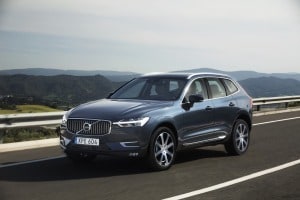Jobs, Income Growth Not Enough for Car Sales Recovery in Some States

I recently read about an interesting analysis of employment levels by state. This research, conducted by IHS Global Insight economist Steven Frable, found that only four states to date have created enough jobs to return to 2007 employment levels, with another 13 states expected to join that group by the end of 2013. The results made me wonder about the state of the auto sales recovery at the state level. Economists typically consider employment levels, as measured by non-farm payrolls, to be a lagging indicator — that is, an economic factor that changes after the economy has begun to follow a particular pattern or trend. Consumer spending, including auto sales, is seen as a leading indicator. Through its effect on the economy in general, consumer spending is a primary driver of jobs growth, which then has the secondary effect of motivating further consumer spending. Given this dynamic, the auto sales recovery should be more advanced in the states with more advanced employment recoveries, and less advanced in states with less advanced employment recoveries.
New registration data from Polk reveal that states in which auto sales are closer to reaching 2007 peak levels tend to have more recovered employment levels as well. Of the top ten states in terms of autos recovery, seven have reached or are expected to reach 2007 employment levels ahead of the average target — post-2014. All but one of the bottom ten states in terms of autos recovery are not expected to achieve 2007 employment levels until 2014 or later. But, there are a number of surprising exceptions. Just four of the eight states not expected to attain 2007 employment levels until at least 2016 ranked in the bottom quartile for autos recovery to date. The other employment laggers showed greater autos recovery progress and one (Ohio) even ranked in the top ten for autos recovery.

A closer look at North Dakota, Alaska, Texas, and Louisiana — the four states in which employment has recovered to 2007 levels — provides further surprises. Employment recovery is attributed to an energy boom in each of these states and, for Louisiana, to a low starting level due to Hurricane Katrina as well. Of these states, only North Dakota had surpassed its 2007 auto sales by the end of 2011. Alaska was close to breaking even and ranked in the top ten states in terms of auto sales recovery. But only these two of the top four employment recovery states were on the "top ten" list of autos recovery states. Texas and Louisiana came in thirteenth and tenth from the bottom, respectively, of the autos recovery list.
These inconsistencies highlight a key fact about the employment recovery as measured by number of jobs — namely, that all jobs are not created equal. In particular, unless a new job (or an existing job) features adequate income for a consumer to afford a new car, then a key element for motivating consumer spending is lacking. Data on income levels by state for 2011 versus 2007 add some clarity to the lack of a car sales recovery in states with a more advanced employment recovery. For example, of the top employment recovery states, low autos performers Texas and Louisiana have had below average income growth since 2007, despite their strong employment recoveries. In contrast, for the high autos performers, North Dakota boasts the highest income growth of any state and Alaska ranks eleventh. Similarly, Colorado's and Utah's lack of a car sales recovery in the face of above average employment gains could be due to bottom ten income growth whereas Iowa and Vermont rank among the top states for income growth and car sales growth, despite average progress on the employment front.

For other states, though, sluggish cars sales contrast with above average income growth and a quicker employment recovery pace. In these cases, even quality jobs may not be enough to stimulate consumer spending on large purchases of durable goods, such as autos, and other factors, such as consumer confidence and credit, should be considered in explaining the less advanced auto sales recovery.
Lacey Plache is the Chief Economist for Edmunds.com. Follow @AutoEconomist on Twitter.





